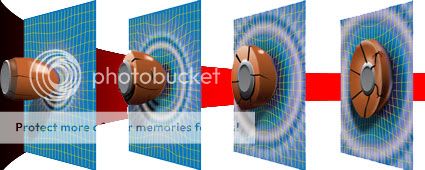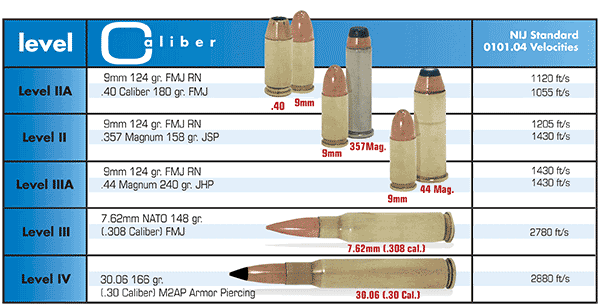The answer is not as simple as “yes” or “no”. A better question would be:
“Is synthetic oil the best choice for this application? All types of synthetic base oils can be the best choice for certain situations.” That will help you to identifying some situations where they make sense or provide value.
 |
| Synthetic Oil |
There are plenty of potential benefits to using synthetic oil vs mineral oil, but that doesn’t mean that synthetics are necessarily better.
 |
| Mineral Oil |
In order to get value from using a higher-priced synthetic oil, you must ensure that you are utilizing the potential improved performance of those products; and to make those determinations, you need to understand the conditions that allow synthetics to provide that value. To more fully understand this issue, first consider the major advantages of common types of synthetic base oils and then identify the conditions for which these advantages become benefits.
For the sake of brevity, I will not discuss all synthetics, but rather focus on the most common ones –
PAOs (polyalphaolefins), PAGs (polyalkaline glycol), diester and polyol ester.
Polyalphaolefins (PAOs)
PAOs, often called synthetic hydrocarbons, are probably the most common type of synthetic base oil used today. They are moderately priced, provide excellent performance and have few negative attributes.
PAO base oil is actually similar to mineral oil. The advantage comes from the fact that it is built, rather than extracted and modified, making it more pure. Practically all of the oil molecules are the same shape and size and are completely saturated.
The potential benefits of PAOs are improved oxidative and thermal stability, excellent demulsibility and hydrolytic stability, a high VI, and very low pour point. Most of the properties make PAOs a good selection for temperature extremes – both high operating temperatures and low start-up temperatures. In my opinion, those are the conditions that favor PAO selection. Typical applications for PAOs are engine oils, gear oils and compressor oils.
The negative attributes of PAOs are the price and poor solubility. The low inherent solubility of PAOs creates problems for formulators when it comes to dissolving additives. Likewise, PAOs cannot suspend potential varnish-forming degradation by-products, although they are less prone to create such material.
For the most part, this issue of solubility can be addressed through the addition of other base oils such as diester. The cost issue is really about whether or not you actually get value by utilizing the performance.
Polyalkaline glycols (PAGs or PGs)
PAG base oils have several unique properties that allow them to work very well in certain applications. In general, they have excellent oxidative and thermal stability, very high VI, excellent film strength and an extremely low tendency to leave deposits on machine surfaces. The low deposit-forming tendency is really due to two properties – the oil’s ability to dissolve deposits and the fact that the oil burns clean. So when they are exposed to a very hot surface or subjected to micro-dieseling by entrained air, PAGs are less likely to leave residue that will form deposits. PAGs may also be the only type of base oil with significantly lower fluid friction, which may allow for energy savings. The other unique property of PAGs is the ability to absorb a great deal of water and maintain lubricity.
There are actually two different types of PAGs – one demulisifies and the other absorbs water. The latter can be very useful if you have a compressor that cannot be stopped that is continually contaminated with large amounts of water. The most common applications for PAGs are compressors and critical gearing applications.
The negatives of PAGs are their very high cost and the potential to be somewhat hydrolytically unstable.
Dibasic Acid Ester (Diester)
The properties of diester are somewhat similar to that of PGs. It has excellent oxidative and thermal stability, very high VI and excellent solubility. This excellent solubility makes it a good choice for reciprocating compressors, where valve deposits can be a huge problem. Another common application for diester is in synthetic engine oil. It is often used as an additive with PAO basestocks to provide the necessary solvency for the engine oil’s large additive package. As a side effect, the synthetic engine oil will have excellent detergency. The negative attributes of diester are the high price and poor hydrolytic stability.
Polyol Ester
Polyol ester basestocks have several excellent performance properties, including thermal stability, super-high VI and fire resistance. Of the base oils mentioned in this column, it is probably the best choice for very high-temperature applications. The two most common applications for polyol ester are fire-resistant hydraulic fluids and jet engine oils. They can be used in engine oils and compressor applications, as well. The negative attributes are the same as those for diester.
3 Common Misconceptions about Synthetic Oil
There are at least three common misconceptions about synthetic oil. The first misconception is that a car has to be flushed before using synthetic oil. The second misconception is that motorcycles do not benefit from using synthetic oil. The third misconception about synthetic oil is that your car's warranty will be voided if you use synthetic oil. These misconceptions are founded in a belief that synthetic oil is bad for cars and that you should use conventional oil only.
There are other misconceptions associated with the use of synthetic oil. You can find these misconceptions published by the makers of synthetic oil. You can go on line for the specifics or contact the manufacturer of the synthetic oil.
1. A Car Needs to Be Flushed
There is a misconception that the car needs to be flushed completely of its conventional oil before you can add synthetic oil. The fact is there is no special preparation that is required when you add synthetic oil to your car. switching to synthetic oil only requires you to start adding it to your engine. The next time you have an oil change ask that synthetic be added completely.
Flushing the car's oil is only necessary if you are experiencing problems with the engine. This includes sludge build up and problems with starting and stopping the engine. An engine flush will solve these problems and you can take the opportunity to substitute your old conventional oil with synthetic oil.
2. Motorcycles cannot Use Synthetic Oil
Another common misconception about synthetic oil is that motorcycles do not benefit from its use. The fact is that synthetic oil is especially designed for motorcycles and motorcycle use. Many synthetic oil companies make products that are specially designed for motorcycles.
A motorcycle's engine design is best suited for using synthetic oil. A motorcycle high performance makes it the ideal vehicle for using synthetic oil.
3. Car's Warranty will be Voided
A third misconception about synthetic oil is that the car's warranty will be voided if you use synthetic oil. This is not true with the exception of Mazda brand cars. Mazda brand cars do not permit the use of synthetic oil and any such use will immediately void the car's warranty. No other vehicle brand has such as restriction regarding the use of synthetic oil nor do they have such a prohibition in place. As such using synthetic oil in place of conventional motor oil does not pose any problems for you as long as the vehicle that you own is not a Mazda brand car.
These are a few of the common misconceptions associated with synthetic oil. Other misconceptions can be found online. Any questions that you have regarding the use of synthetic oil should be raised with the manufacturer of the oil or the manufacturer of your car. This is the best source to determine how to use synthetic oil.
Go for ‘Right’ Quality
There are many applications for which synthetic oils provide solutions to tough operating conditions. I have mentioned a few of those here, but there are others. To me, it is not so important to use the “best” quality lubricant in every application, but rather to use the “right” quality.
Synthetic oil is improvement from mineral oil, and that will caused overall synthetic oil better than mineral oil. Synthetic oil has uniform molecular structure and perfectly balance.
 |
| The Uniform of molecular structure from the oil |
Many people waste money on expensive products that for a number of reasons don’t improve reliability or anything else. One other important thing to remember is that I am discussing the properties of base oils, not finished lubricants. It is quite possible for a finished lubricant using a mineral basestock to offer better performance than a similar product utilizing a synthetic.
So, back to the original question, is synthetic oil better? The answer is yes … and no … or maybe. You’ll have to decide.
























































